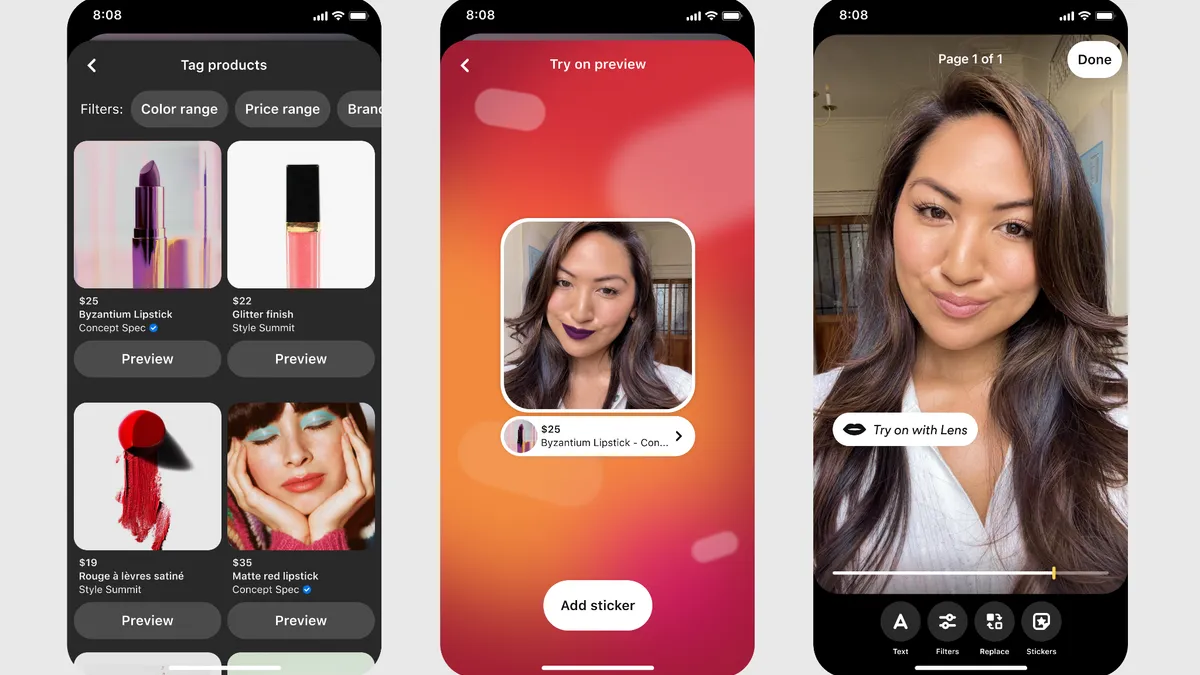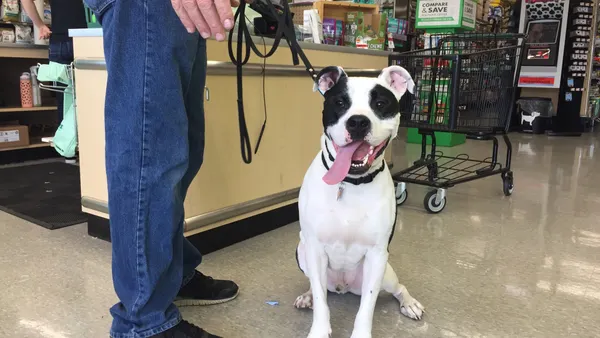Dive Brief:
- To attract advertisers and support e-commerce on its platform, Pinterest has introduced new features for its video-based Idea Pins: product tagging, shopping recommendations and augmented reality try-on integration, the company announced via email.
- Users can now tag shoppable Product Pins to their Idea Pins. The platform has also integrated visual search recommendations and shopping capabilities through Idea Pins, enabling users to purchase or find similar items to what they see in posts.
- The company has also redesigned its home page to give users the option to browse its pins like normal or use a new "watch" tab to see a full-screen feed of Idea Pins from creators. The videos that show up are personalized to a user's tastes and preferences.
Dive Insight:
Pinterest has been on a journey to drive monetization on its platform, and these latest features are no exception. In addition to making its video-based Idea Pins more prominent on the platform, Pinterest is also making shopping them easier. Outside of product recommendations and tagging, creators can also tag their Idea Pins with a try-on sticker to point users to the AR lipstick and eyeshadow testing feature to encourage users to try before buying. The tool covers more than 10,000 AR-enabled products on the platform, per the announcement.
The social media platform is also sweetening the deal for creators by introducing an in-product monetization program called Creators Rewards, which Pinterest is investing $20 million into. The program allows creators to get paid for meeting certain goals, and is available through a new "Creator Hub" where creators can manage their presence on the platform.
These recent features build upon years of Pinterest investing in shopping capabilities, including with features it released this summer, like the shopping list tool and "The Goods by Pinterest" feature. In July, the platform introduced shoppable Idea Pins and enabled creators to collaborate with brands on sponsored content and earn commissions.
In addition to targeting features toward shoppers and content creators on its platform, the company has also courted advertisers. Earlier this year, the social media platform created a new advertising format that allows marketers to automate the process of building personalized creative assets for specific users. Then in March, the company hosted its first international advertiser summit, providing content tailored to advertisers across the U.S., the U.K., France, Germany, Australia and Canada.
Other tech platforms have been experimenting with augmented reality tools to help homebound users test out products as well as social commerce rises. Snapchat, in particular, has been integrating AR tools into its business and has invested in the technology in other ways, including through a recent deal with WPP to create AR products that connect to e-commerce tools.
Etsy, Amazon and Google, among many other companies, have recently launched their own AR features or experiences to engage customers and encourage shopping. Social media firms as well have been leading the charge on integrating more features to encourage shopping on their platforms: Facebook, for example, announced plans in June to add AR product testing features to Instagram.














